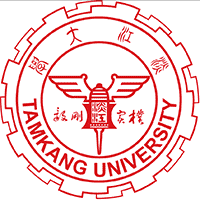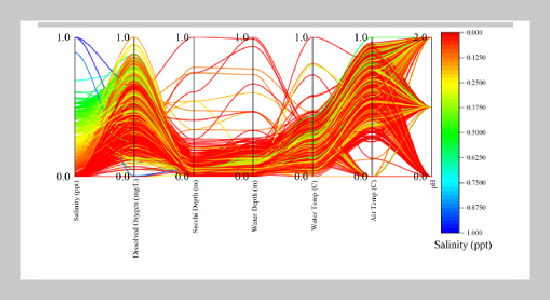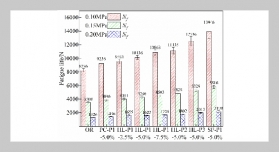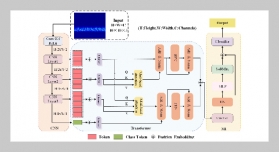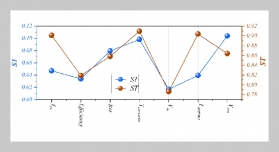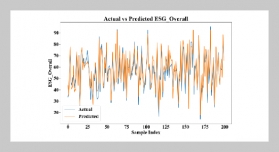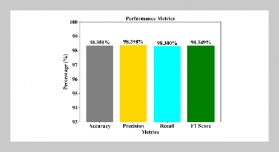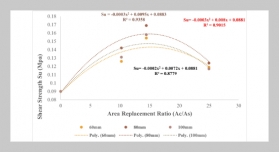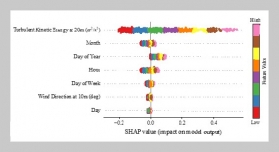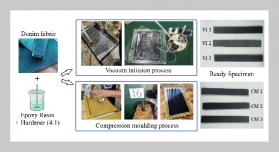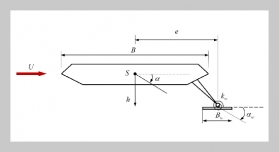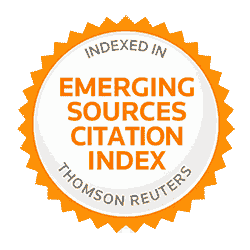- [1] R. Xu, S. Hu, H. Wan, Y. Xie, Y. Cai, and J. Wen, (2024) “A unified deep learning framework for water quality pre diction based on time-frequency feature extraction and data feature enhancement" Journal of Environmental Management 351: 119894. DOI: 10.1016/j.jenvman.2023.119894.
- [2] A. F. del Castillo, M. V. Garibay, D. Díaz-Vázquez, C. Yebra-Montes, L. E. Brown, A. Johnson, A. Garcia Gonzalez, and M. S. Gradilla-Hernández, (2024) “Im proving river water quality prediction with hybrid ma chine learning and temporal analysis" Ecological Informatics 82: 102655. DOI: 10.1016/j.ecoinf.2024.102655.
- [3] N. Satish, J. Anmala, K. Rajitha, and M. R. R. Varma, (2024) “A stacking ANN ensemble model of ML models for stream water quality prediction of Godavari River Basin, India" Ecological Informatics 80: 102500. DOI: 10.1016/j.ecoinf.2024.102500.
- [4] S. Chen, J. Huang, P. Wang, X. Tang, and Z. Zhang, (2024) “A coupled model to improve river water quality prediction towards addressing non-stationarity and data limitation" Water Research 248: 120895. DOI: 10.1016/j.watres.2023.120895.
- [5] M. K. Nallakaruppan, E. Gangadevi, M. L. Shri, B. Balusamy, S. Bhattacharya, and S. Selvarajan, (2024) “Reliable water quality prediction and parametricanaly sis using explainable AI models" Scientific Reports 14: 7520. DOI: 10.1038/s41598-024-56775-y.
- [6] Q. Tian, W. Luo, and L. Guo, (2024) “Water quality prediction in the Yellow River source area based on the DeepTCN-GRUmodel "Journal of Water Process Engineering 59: 105052. DOI: 10.1016/j.jwpe.2024.105052.
- [7] Z. Li, H. Liu, C. Zhang, and G. Fu, (2024) “Real-time water quality prediction in water distribution networks using graph neural networks with sparse monitoring data" Water Research 250: 121018. DOI: 10.1016/j.watres. 2023.121018.
- [8] M. Y. Shams, A. M. Elshewey, E.-S. M. El-Kenawy, A. Ibrahim, F. M. Talaat, and Z. Tarek, (2024) “Water quality prediction using machine learning models based on grid search method" Multimedia Tools and Applications 83: 35307–35334. DOI: 10.1007/s11042-023-16737-4.
- [9] M. Y. Shams, A. M. Elshewey, E.-S. M. El-Kenawy, A. Ibrahim, F. M. Talaat, and Z. Tarek, (2024) “Water quality prediction using machine learning models based on grid search method" Multimedia Tools and Applications 83: 35307–35334. DOI: 10.1007/s11042-023-16737-4.
- [10] J. Sun, X. Guan, X. Sun, X. Cao, Y. Tan, and J. Liao, (2024) “Water quality prediction and carbon reduction mechanisms in wastewater treatment in Northwest cities using Random Forest Regression model" Scientific Re ports 14: 31525. DOI: 10.1038/s41598-024-83277-8.
- [11] H. Jeong, S. Park, B. Choi, C. S. Yu, J. Y. Hong, T.-Y. Jeong, and K. H. Cho, (2024) “Machine learning-based water quality prediction using octennial in-situ Daphnia magna biological early warning system data" Journal of Hazardous Materials 465: 133196. DOI: 10.1016/j.jhazmat.2023.133196.
- [12] M. Fooladi, M. R. Nikoo, R. Mirghafari, C. A. Madramootoo, G. Al-Rawas, and R. Nazari, (2024) “Robust clustering-based hybrid technique enabling reliable reservoir water quality prediction with uncertainty quantification and spatial analysis" Journal of Environ mental Management 362: 121259. DOI: 10.1016/j.jenvman.2024.121259.
- [13] X. Chen, Y. Chen, T. Shimizu, J. Niu, K. Nakagami, X. Qian, B. Jia, J. Nakajima, J. Han, and J. Li, (2017) “Water resources management in the urban agglomeration of the Lake Biwa region, Japan: An ecosystem services based sustainability assessment" Science of the Total Environment 586: 174–187. DOI: 10.1016/j.scitotenv. 2017.01.197.
- [14] A. Parsaie and A. H. Haghiabi, (2017) “Numerical routing of tracer concentrations in rivers with stagnant zones" Water Science and Technology: Water Supply 17: 825–834. DOI: 10.2166/ws.2016.175.
- [15] R. J. May, G. C. Dandy, H. R. Maier, and J. B. Nixon, (2008) “Application of partial mutual information variable selection to ANN forecasting of water quality in water distribution systems" Environmental Modelling & Software 23: 1289–1299. DOI: 10.1016/j.envsoft.2008.03.008.
- [16] S. Palani, S.-Y. Liong, and P. Tkalich, (2008) “An ANN application for water quality forecasting" Marine pollution bulletin 56: 1586–1597. DOI: 10.1016/j.marpolbul.2008.05.021.
- [17] A. H.Haghiabi, (2016) “Prediction of longitudinal dispersion coefficient using multivariate adaptive regression splines" Journal of Earth System Science 125: 985 995. DOI: 10.1007/s12040-016-0708-8.
- [18] N. S. Jaddi and S. Abdullah, (2017) “A cooperative competitive master-slave global-best harmony search for ANN optimization and water-quality prediction" Ap plied Soft Computing 51: 209–224. DOI: 10.1016/j.asoc.2016.12.011.
- [19] S. Emamgholizadeh, H. Kashi, I. Marofpoor, and E. Zalaghi, (2014) “Prediction of water quality parameters of Karoon River (Iran) by artificial intelligence-based models" International Journal of Environmental Science and Technology 11: 645–656. DOI: 10.1007/s13762 013-0378-x.
- [20] M.Shokoohi,M.Tabesh, S. Nazif, and M. Dini, (2017) “Water quality based multi-objective optimal design of water distribution systems" Water Resources Manage ment 31: 93–108. DOI: 10.1007/s11269-016-1512-6.
- [21] M.R.NikooandN.Mahjouri, (2013) “Water quality zoning using probabilistic support vector machines and self-organizing maps" Water resources management 27: 2577–2594. DOI: 10.1007/s11269-013-0304-5.
- [22] S. Heddam, (2016) “Secchi disk depth estimation from water quality parameters: artificial neural network versus multiple linear regression models?" Environmental processes 3: 525–536. DOI: 10.1007/s40710-016-0144-4.
- [23] D.-C. Feng, Z.-T. Liu, X.-D. Wang, Y. Chen, J.-Q. Chang, D.-F. Wei, and Z.-M. Jiang, (2020) “Machine learning-based compressive strength prediction for con crete: An adaptive boosting approach" Construction and Building Materials 230: 117000. DOI: 10.1016/j.conbuildmat.2019.117000.
- [24] K. W.Walker and Z. Jiang, (2019) “Application of adaptive boosting (AdaBoost) in demand-driven acquisition (DDA) prediction: A machine-learning approach" The Journal of Academic Librarianship 45: 203–212. DOI: 10.1016/j.acalib.2019.02.013.
- [25] K. M. Leung, (2007) “Naive bayesian classifier" Poly technic University Department of Computer Science/Finance and Risk Engineering 2007: 123–156.
- [26] E. Frank, M. Hall, and B. Pfahringer, (2012) “Locally weighted naive bayes" arXiv preprint arXiv:1212.2487: DOI: 10.48550/arXiv.1212.2487.
- [27] F. Zheng and G. I. Webb, (2005) “A comparative study of semi-naive Bayes methods in classification learning" AUSDM05:141–155.
- [28] A.Flack,E.O.Aikens,A.Kölzsch,E.Nourani,K.R.S. Snell, W. Fiedler, N. Linek, H.-G. Bauer, K. Thorup, and J. Partecke, (2022) “New frontiers in bird migration research" Current Biology 32: R1187–R1199. DOI: 10.1016/j.cub.2022.08.028.
- [29] A. C. Lees and J. J. Gilroy, (2021) “Bird migration: When vagrants become pioneers" Current Biology 31: R1568–R1570. DOI: 10.1016/j.cub.2021.10.058.
- [30] Y. Cheng, Z. Wen, X. He, Z. Dong, M. Zhangshang, D. Li, Y. Wang, Y. Jiang, and Y. Wu, (2022) “Ecological traits affect the seasonal migration patterns of breeding birds along a subtropical altitudinal gradient" Avian Re search 13: 100066. DOI: 10.1016/j.avrs.2022.100066.
- [31] M.-r. Jiang, X.-f. Feng, C.-p. Wang, X.-l. Fan, and H. Zhang, (2023) “Robust color image watermarking algorithm based on synchronization correction with multi layer perceptron and Cauchy distribution model" Ap plied Soft Computing 140: 110271. DOI: 10.1016/j. asoc.2023.110271.
- [32] S. Kadry andV. Rajinikanth, (2021) “Image multi-level thresholding with Mayfly optimization" International Journal of Electrical & Computer Engineering(2088 8708) 11: DOI: 10.11591/ijece.v11i6.pp5420-5429.
- [33] K. Zervoudakis and S. Tsafarakis, (2020) “A mayfly optimization algorithm" Computers & Industrial Engineering 145: 106559. DOI: 10.1016/j.cie.2020.106559.
- [34] T. Bhattacharyya, B. Chatterjee, P. K. Singh, J. H. Yoon, Z. W. Geem, and R. Sarkar, (2020) “Mayfly in harmony: A new hybrid meta-heuristic feature selection algorithm" IEEE Access 8: 195929–195945. DOI: 10.1109/ACCESS.2020.3031718.
- [35] N. S. M. Raja, V. Rajinikanth, and K. Latha, (2014) “Otsu based optimal multilevel image thresholding using firefly algorithm" Modelling and Simulation in Engineering 2014: 794574. DOI: 10.1155/2014/794574.
- [36] V. Rajinikanth and M. S. Couceiro. “Optimal multi level image threshold selection using a novel objective function”. In: Information Systems Design and Intelligent Applications: Proceedings of Second International Conference INDIA 2015, Volume 2. Springer, 2015, 177 186. DOI: 10.1007/978-81-322-2247-7_19.
